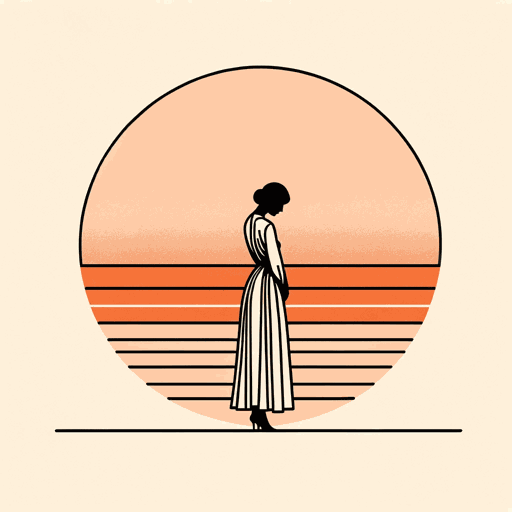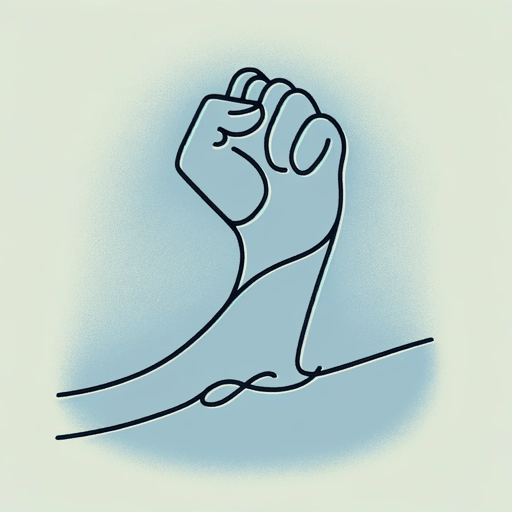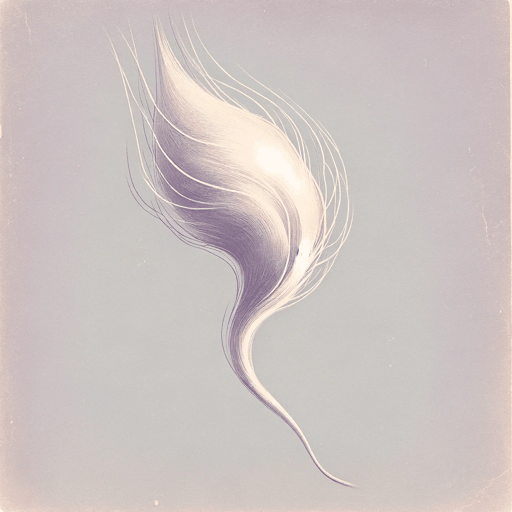18 pages • 36 minutes read
Gwendolyn Brooksthe rites for Cousin Vit
Fiction | Poem | Adult | Published in 1949A modern alternative to SparkNotes and CliffsNotes, SuperSummary offers high-quality Study Guides with detailed chapter summaries and analysis of major themes, characters, and more.
Summary and Study Guide
Overview
Gwendolyn Brooks wrote the poem "the rites for Cousin Vit,” which plays with the sonnet form and is a part of her Pulitzer Prize-winning collection Annie Allen (1949). A close friend inspired the poem. In Conversations with Gwendolyn Brooks, Brooks says her friend had “that impressibility that seems unconfinable even in death.” (Gayles, Gloria Jean Wade. Conversations with Gwendolyn Brooks. 2003. University Press of Mississippi.) The poem’s main message revolves around shining the spotlight on a singular, independent woman. Like other poems by Brooks—“the mother” (1945) and “The Crazy Woman” (1960), among them—“the rites for Cousin Vit” showcases the dynamic ups and downs of womanhood. Although Brooks distanced herself from feminism—she thought the movement mainly concerned white women—she didn’t believe Black women should surrender their power or autonomy. As “the rites for Cousin Vit” demonstrates, Brooks thought Black women had the right to live full, pleasurable lives and not put up with demeaning men.
The Harlem Renaissance of the 1920s and 30s also impacted Brooks’s sonnet and career. Brooks read authors affiliated with the keenly creative period; these earlier Black writers helped build Brooks a platform so that she could present a Black woman as multidimensional as Cousin Vit. At the same time, Brooks felt the need to counter what her biographer George Kent calls “the exotic vein of the Harlem Renaissance” (Kent, George. A Life of Gwendolyn Brooks. 1990. The University of Kentucky Press). Brooks’s aim to present Black people as part and parcel of the human race might be why Cousin Vit isn't assigned a specific race. But to act as if Cousin Vit and the speaker aren’t Black women could come across as erasure or as a misreading of Brooks's mission to make race and gender nuanced, not fetishistic.
Poet Biography
Gwendolyn Brooks’s mom, Keziah Wims Brooks, was a schoolteacher and her dad, David Brooks, was a janitor. They lived in Chicago but wanted to Gwendolyn to be born at Keziah’s parents’ house in Topeka, Kansas, so, on June 7, 1917, Gwendolyn Brooks was born in Kansas. With their newborn daughter, Keziah and David moved back to Chicago and the South Side. Brooks grew up in a neighborhood nicknamed “Bronzeville'' since most of the people living there were Black. Her parents created an artistic and literary environment. Her mom and dad filled the house with singing and books. In his biography of Brooks, George Kent writes, “Legend has it that Keziah stated, ‘You are going to be the lady Paul Laurence Dunbar.’” (Kent, A Life of Gwendolyn Brooks.) Dunbar was a formidable Black poet of the late 1800s/early 1900s.
Sure enough, Brooks wasted little time in launching her literary career. At 11, she published four poems in a local newspaper, The Hyde Parker. Two years later, she published a poem in the national magazine, American Childhood. Later in her teens, she met Langston Hughes, the well-known poet affiliated with the Harlem Renaissance—the New York City-based movement composed of Black artists and writers who wrote proudly and unapologetically about their experiences. According to Angela Jackson’s critical biography of Brooks, Hughes told her, “Keep writing! Someday, you’ll have a book published!” (Jackson, Angela. A Surprised Queenhood in the New Black Sun. 2017. Beacon Press.)
First, Brooks had to graduate from a junior college. Then, she had to work to help her family, who, like people throughout the world, struggled financially due to the Great Depression. In 1937, Brooks joined the National Association for the Advancement of Colored People (NAACP) Youth Council. She married another writer, Henry Blakely, and, in 1940, they had a son, Henry. The marriage was far from perfect. The couple separated near the end of 1969. Brooks enjoyed her freedom and independence, although she and Henry eventually reunited.
Returning to the 1940s—in 1941, Brooks attended a poetry workshop led by a wealthy white woman, Inez Cunningham. Cunningham was a reader for the influential Poetry magazine and opened many doors for Brooks. In 1945, Harper & Row published Brooks’s first book of poems, A Street in Bronzeville, bringing Hughes’s prediction to fruition.
In 1949, Harper & Row published Annie Allen, which won the 1950 Pulitzer Prize for Poetry, making Brooks the first Black person to take home the prestigious honor. The honors, grants, and publications piled up for Brooks. She received Guggenheim fellowships and a grant from the American Academy of Arts and Letters. She started to review books for the Chicago Tribune and the Chicago Sun-Times. In September 1951, her daughter Nora was born. Two years later, she published her episodic novel, Maud Martha. In 1956, she published a collection of poems for children, Bronzeville Boys and Girls.
In the 1960s, she became familiar with writers—Amiri Baraka and Ron Milner, among them—connected to the Black Arts Movement. Like the Harlem Renaissance, the Black Arts Movement encouraged Black writers to uncompromisingly assert their identity and voice. Around this time, Brooks started a poetry workshop in Chicago for young people. Her students included members of the Chicago gang, the Blackstone Rangers.
Galvanized by the Black Arts Movement, Brooks left Harper & Row and started publishing with the Black-owned Broadside Press. The company published several books by Brooks. It published the poetry collection Family Pictures in 1970 and her two autobiographies. In 1976, Brooks became the first Black woman to be elected to the illustrious National Institute of Arts and Letters. In 1989, the National Endowment for the Arts gave her a lifetime achievement award.
In 2000, at 83-years-old, the dedicated Brooks died at her home in Chicago. Summing up her unique gift for speaking to the common person, Harvey Curtis Webster, in a 1963 article for The Nation, called Brooks the “everywoman differentiated” (Kent, A Life of Gwendolyn Brooks.) Although her talents made her stand out, she didn't stop communicating with the regular person.
Poem Text
Brooks, Gwendolyn. “the rites for Cousin Vit.” 1949. Poetry Foundation.
Summary
“the rites for Cousin Vit” is a part of a larger section in Brooks’s collection Annie Allen titled “The Womanhood.” The section features nine separate poems. Each of the poems features titles with lowercase nouns and, when applicable, uppercase proper nouns.
The poem is about the funeral or “rites'' of a woman named Cousin Vit. Funeral rites move Cousin Vit from her home and “out the door” (Line 1). Cousin Vit is “unprotesting,” (Line 1) and doesn’t fight the relocation. The casket stand she is in is “[k]icked back” (Line 2). Neither the casket nor the “stuff and satin” (Line 3) inside the casket can confine her. She has “[t]oo much” (Line 5) spirit in her: Death fails to keep her down.
The “unprotesting” woman in Line 1 becomes defiant when she “rises” (Line 6). She leaves the solemn ceremony and returns to her pleasurable, raucous life. Lines 8-14 detail how Cousin Vit spent her days. She drank, loved, and danced. Fearless, she ventured into mysterious “parks” and “alleys” (Line 13). Overall, Cousin Vit “haply” (Lines 13 and 14) or luckily found happiness. It was stormy or hysterical happiness, but happiness still.
Related Titles
By Gwendolyn Brooks

A Bronzeville Mother Loiters in Mississippi. Meanwhile, a Mississippi Mother Burns Bacon
Gwendolyn Brooks

A Sunset of the City
Gwendolyn Brooks

Boy Breaking Glass
Gwendolyn Brooks

Cynthia in the Snow
Gwendolyn Brooks

Maud Martha
Gwendolyn Brooks

my dreams, my works, must wait till after hell
Gwendolyn Brooks

Speech to the Young: Speech to the Progress-Toward (Among them Nora and Henry III)
Gwendolyn Brooks

The Ballad of Rudolph Reed
Gwendolyn Brooks

The birth in a narrow room
Gwendolyn Brooks

The Blackstone Rangers
Gwendolyn Brooks

The Chicago Defender Sends a Man to Little Rock
Gwendolyn Brooks

The Crazy Woman
Gwendolyn Brooks

The Lovers of the Poor
Gwendolyn Brooks

The Mother
Gwendolyn Brooks

To Be in Love
Gwendolyn Brooks

To The Diaspora
Gwendolyn Brooks

Ulysses
Gwendolyn Brooks

We Real Cool
Gwendolyn Brooks

